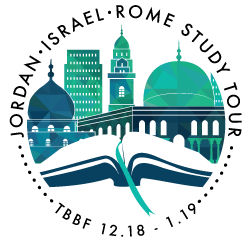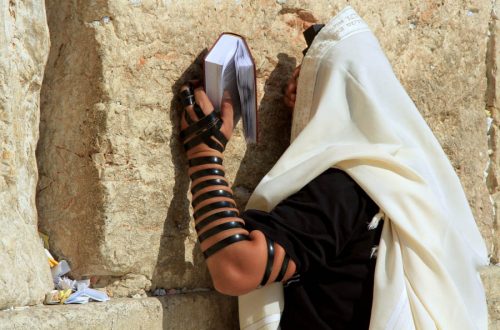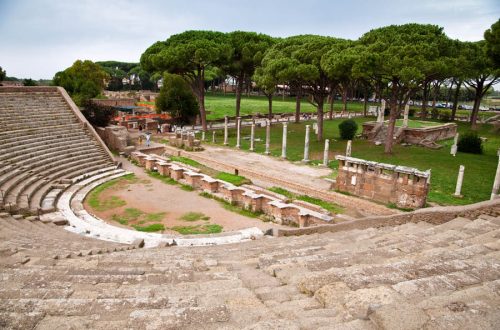Welcome to the Israel 2018 Travel Blog!
We will all be very happy to arrive in Amman, Jordan, after long flights from Los Angeles! A nice rest for all of us, at a hotel in Amman, will prepare us for our first day of sightseeing!
What will we be seeing here in Amman? Not much, unfortunately. It’s merely our overnight stopping point before a long bus ride on the King’s Highway, to Petra! But is there any historical significance to Amman, the capital city of Jordan? Of course, there is! Read on and find out about the Amman’s Biblical Significance, Historical Background, and some of my final thoughts about it.
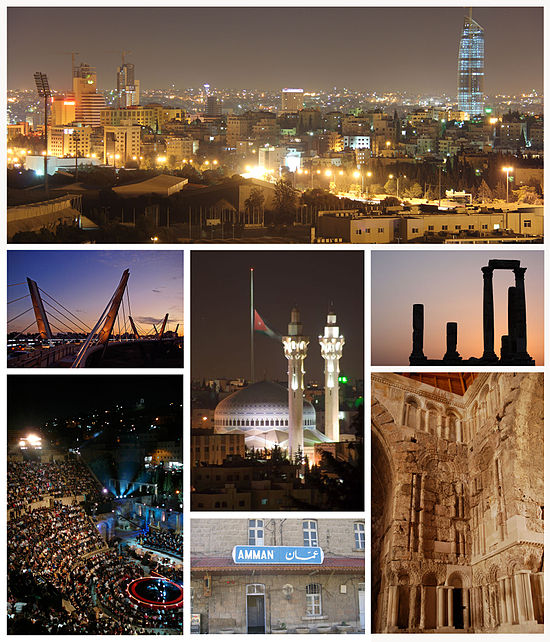
Biblical Significance
The biblical name for the city of Amman was Rabbath-Ammon, the only city of the Ammonites mentioned in the Bible. It was mentioned as having an extraordinary piece of furniture in Deuteronomy 3:11 – “For only Og king of Bashan was left of the remnant of the Rephaim. Behold, his bedstead was an iron bedstead; it is in Rabbah of the sons of Ammon. Its length was nine cubits and its width four cubits by ordinary cubit.”
The city was a key location for one of the most infamous stories in the Bible, located 20 miles east of the Jordan River. The story begins with the death of an Ammonite king in 2 Samuel 10:1-2 – “Now it happened afterwards that the king of the Ammonites died, and Hanun his son became king in his place. Then David said, “I will show kindness to Hanun the son of Nahash, just as his father showed kindness to me.” So, David sent some of his servants to console him concerning his father.”
In spite of David’s kindness Hanun was suspicious and so he humiliated David’s messengers. This outrageous action started a war between Israel and Ammon. Ultimately David defeated Hanun, but apparently the conflict continued on into the next chapter.
2 Samuel 11:1 reads, “Then it happened in the spring, at the time when kings go out to battle, that David sent Joab and his servants with him and all Israel, and they destroyed the sons of Ammon and besieged Rabbah. But David stayed at Jerusalem.” The rest of the story is very sad.
King David sinned by sleeping with Bathsheba. She got pregnant. Then he tried to cover it up by bringing her husband Uriah back from the battlefield. David hoped that Uriah would sleep with his wife and no one would know about his treacherous sin. But Uriah refused to take comfort in his wife while his fellow soldiers were still suffering in the battle. Although David was called “a man after God’s own heart,” what he did next to Uriah was pure wickedness.
2 Samuel 11:14-17 – “Now in the morning David wrote a letter to Joab and sent it by the hand of Uriah. He had written in the letter, saying, “Place Uriah in the front line of the fiercest battle and withdraw from him, so that he may be struck down and die.” So, it was as Joab kept watch on the city, that he put Uriah at the place where he knew there were valiant men. The men of the city went out and fought against Joab, and some of the people among David’s servants fell; and Uriah the Hittite also died.”
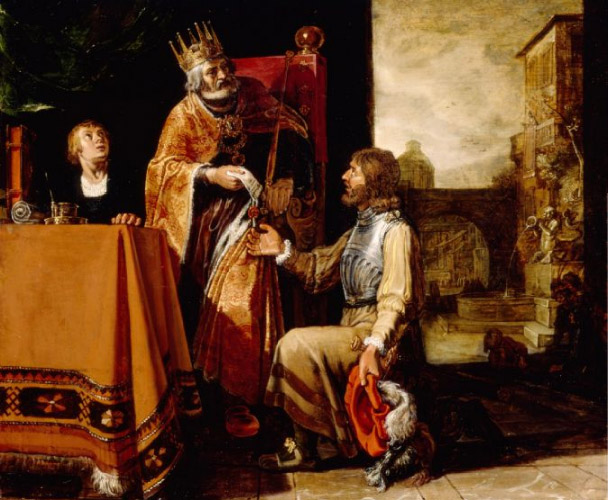
Tragic! David’s life and the life of his family was never the same. So, this ancient city of Rabbah or Amman, is the place of King David’s worst event of his life.
Later, after God had confronted David for his sin, and David repented, we find out that he conquered the city of Rabbah.
2 Samuel 12:26-31 – “Now Joab fought against Rabbah of the sons of Ammon and captured the royal city. Joab sent messengers to David and said, “I have fought against Rabbah, I have even captured the city of waters. “Now therefore, gather the rest of the people together and camp against the city and capture it, or I will capture the city myself and it will be named after me.” So, David gathered all the people and went to Rabbah, fought against it and captured it. Then he took the crown of their king from his head; and its weight was a talent of gold, and in it was a precious stone; and it was placed on David’s head. And he brought out the spoil of the city in great amounts. He also brought out the people who were in it, and set them under saws, sharp iron instruments, and iron axes, and made them pass through the brickkiln. And thus, he did to all the cities of the sons of Ammon. Then David and all the people returned to Jerusalem.”
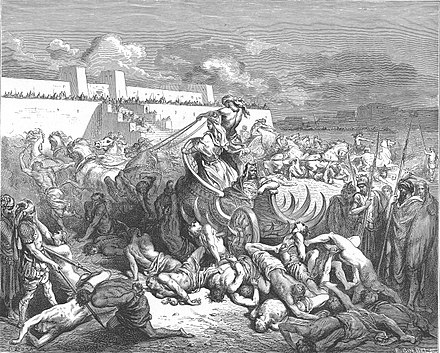
What’s the moral of the story? You tell me. (In the comment section)
And finally, Rabbah is named in two oracles of judgment from the Lord:
Amos 1:13 – “Thus says the Lord,
For three transgressions of the sons of Ammon and for four
I will not revoke its punishment,
Because they ripped open the pregnant women of Gilead
In order to enlarge their borders.
So, I will kindle a fire on the wall of Rabbah
And it will consume her citadels
Amid war cries on the day of battle,
And a storm on the day of tempest.
Their king will go into exile,
He and his princes together,” says the Lord.”
And in Jeremiah 49:2 – “Therefore behold, the days are coming,” declares the Lord,
“That I will cause a trumpet blast of war to be heard
Against Rabbah of the sons of Ammon;
And it will become a desolate heap,
And her towns will be set on fire.
Then Israel will take possession of his possessors,”
Says the Lord.”
Historical Background
Excerpts are quoted from the following resources:
1. (AYBD) Hadidi, A., 1992. Amman D. N. Freedman, ed. The Anchor Yale Bible Dictionary.
2. (LBD) Major Contributors and Editors, 2016. Ammah J. D. Barry et al., eds. The Lexham Bible Dictionary.
In OT times the city was known as “Rabbah of the Ammonites,” (AYBD)
“Although Amman was not inhabited during the Persian period, this changed under the Greeks, who Hellenized the city and changed its name to Philadelphia. Under Roman control, Amman became a member city of the Decapolis, a confederation of ten Hellenistic cities east of the Jordan. The city remained a part of the Roman province of Arabia until its conquest by the Muslims, who renamed it Amman. The material remains in the lower city include a well-preserved theater, an odium, and a nymphaeum, as well as a street and several Roman tombs… Remains of public buildings and holy places are located on the Citadel Hill.” (LBD)
“Modern Amman thus overlies the classical Philadelphia, which in turn overlies OT Rabbah of the Ammonites. Indeed, the springs that still provide water to Amman have made this place a site of habitation since Paleolithic times.” (AYBD)
“In the Hellenistic period the city was renamed Philadelphia to honor Ptolemy II Philadelphos, the Hellenistic ruler of Egypt (285–247 b.c.). In 218 b.c.it was captured by Antiochus III the Great, the Hellenistic ruler of Syria. For about a century before the Roman conquest of the Near East, Amman belonged to the Nabataeans. When Pompey conquered Syria and Palestine (ca. 63 b.c.), Philadelphia became the southernmost member of the Decapolis. In 106 a.d., it became a city in the Roman province of Arabia. Situated on the magnificent Via Nova Traiana which joined Bosra with the Red Sea, Philadelphia enjoyed a long period of prosperity during the 2d century a.d” (AYBD)
“Its well-preserved buildings and striking features of its Roman town plan show the various aspects of Roman art and engineering. The old city consists of an upper and a lower section… The former is built on a prominent hill and constitutes the acropolis (now the Citadel) of the city… From very early times this hill had been a fortress of great importance. The lower city is associated with the wadi bed below and to the S of the acropolis; … In Roman times, streets, public buildings, and a forum were built along this wadi bed.” (AYBD)
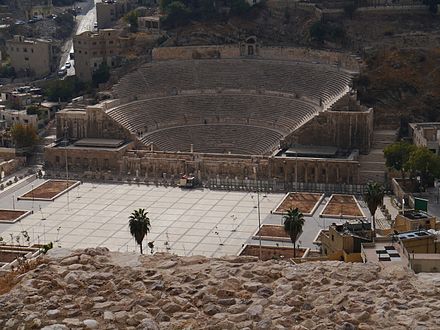
“On the acropolis close to the S wall was built a temple dedicated to Hercules… A fragmentary inscription discovered in the debris around the temple indicates that it was built during the reign of Marcus Aurelius (169–80 a.d.). Partial excavation near the temple shows that it was built on the site of a sacred rock which, as shown by pottery finds, has quite a long history, beginning in the EB Age (ca. 3000 b.c.).” (AYBD)
“Recognizing its strategic value for the region of Amman, the Romans rebuilt the ancient fortress on the acropolis and surrounded it with massive walls which rank among the finest of ancient fortifications… Thus, the forum at Amman ranks among the largest of Roman imperial fora.” (AYBD)
Randy’s Final Thoughts
Although we won’t really have the opportunity to see much in Amman, it is the first place we will see with our own eyes – that which God wrote about in His Word. We’re not in the “Promised Land” yet! We’re located on the other side of the Jordan River. But we’re still walking on ground that was walked on by David’s men, and possibly even King David himself.
What are we already starting to experience here? The Bible is true. The people and places in it are real people and real places. This is just the beginning of the sights, smells and tastes of sort of a journey back in time.
I hope you’re excited?
